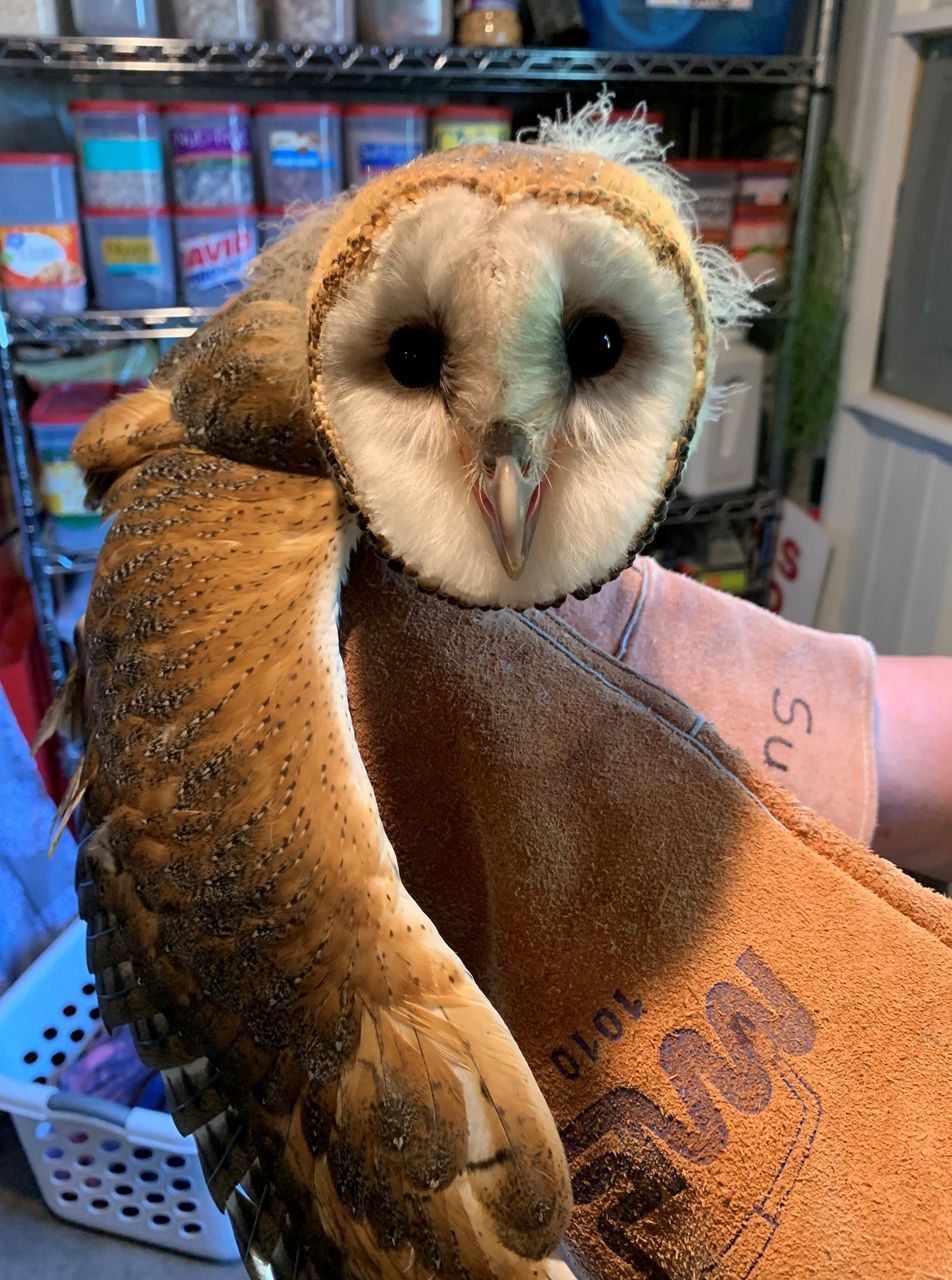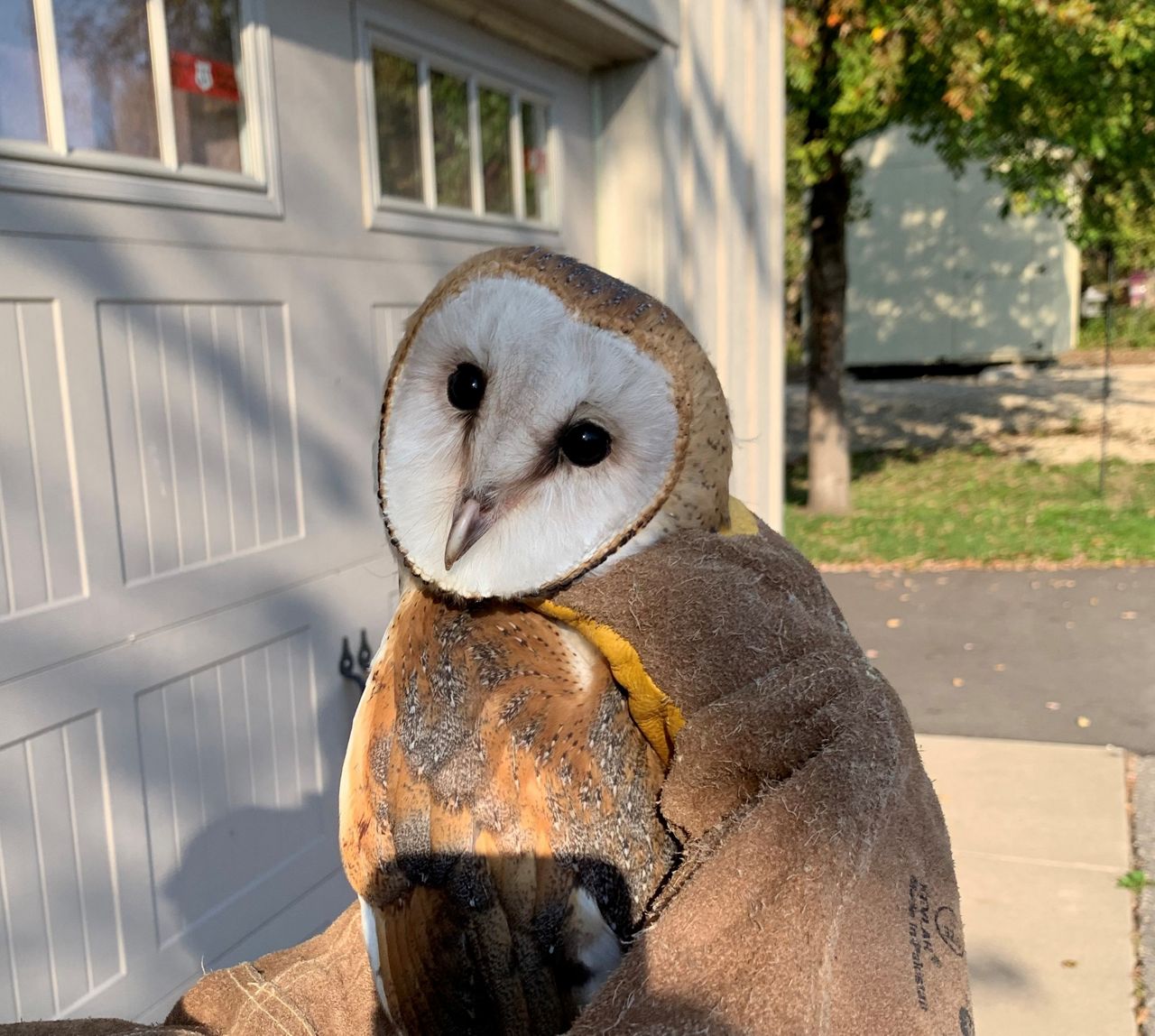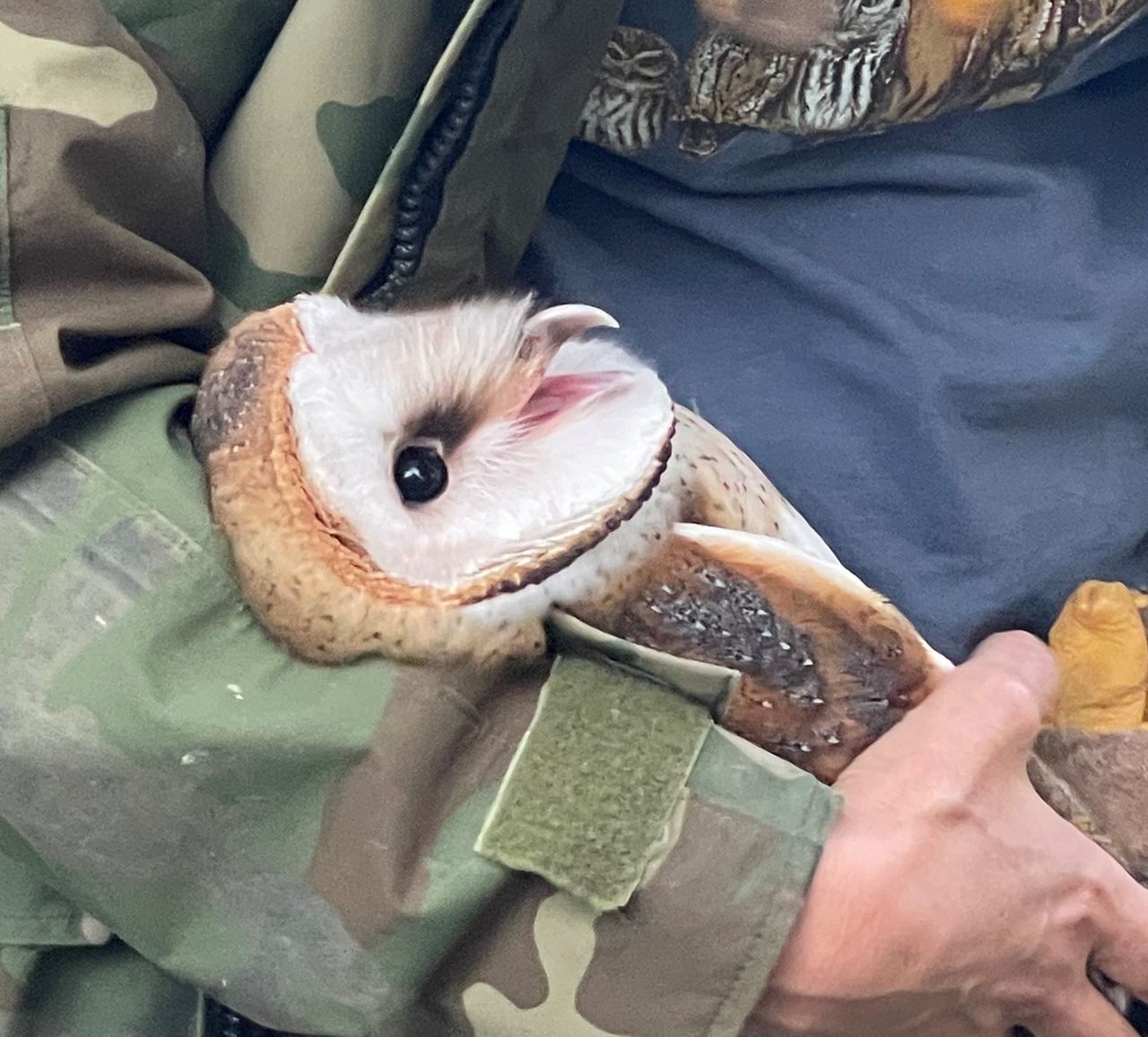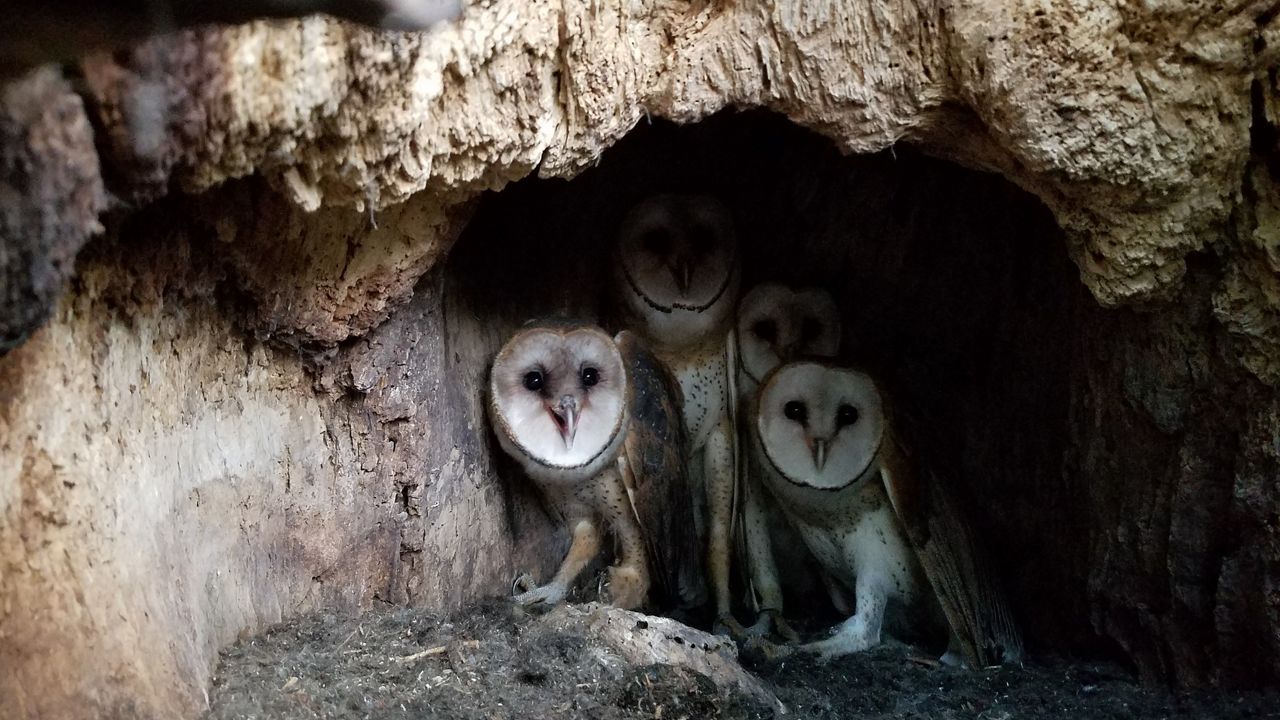LA CROSSE, Wis. — At first, the reports were hard to believe.
When Kathy KasaKaitas got a text from her colleague at the Coulee Region Humane Society about picking up an injured barn owl, she thought it was a typo. The young bird — who was taken in after falling out of a tree in a La Crosse backyard — had to be from a different species, she reasoned.
What You Need To Know
- Wildlife experts recently found the first barn owl nest in Wisconsin since 1999
- The nest was found after a young barn owl fell out of a tree in a La Crosse backyard and was picked up by the local Humane Society
- Barn owls have declined in Wisconsin since the mid-1900s, and are now rarely spotted in the state
- Warmer winters and efforts to provide more habitat may help the species start nesting in the state again
“Barn owls are pretty much extinct in Wisconsin,” said KasaKaitas, animal control supervisor and wildlife rehabilitator at the humane society. “There are some rare sightings, but I certainly wasn’t expecting it to be true.”
Ryan Brady — a conservation biologist with the Wisconsin Department of Natural Resources — also had his doubts. Brady, who said he’s the main contact “when things owl-y turn up” in the state, gets plenty of false alarms about the rare barn owl: Its screech sounds a lot like a young great horned owl, which is much more common in the state.
But then they saw the face. The white heart shape gave it away, KasaKaitas said: They had a real barn owl on their hands.
“When I saw, I was like, ‘Oh wow, that’s fantastic,’” Brady said. “I was shocked.”
There was another shock still to come. The young owl wasn’t just passing through Wisconsin, which seemed to be the case with some of the other few birds reported in recent years, Brady said.

The tree where the young owl had been found, a “huge, half-dead silver maple,” was home to a whole nest — as Karla Bloem discovered when she ran a camera scope up to one of its holes and found more barn owl faces looking back at her.
“I mean, I was ecstatic,” said Bloem, executive director of the International Owl Center across the border in Minnesota, who came over to check out the scene. “A, for them to be barn owls, and B, for it to be a nest.”
Before this latest find, it had been more than two decades since a barn owl nest was documented in Wisconsin, Brady explained. The last one was in 1999, when the DNR conducted a statewide survey to see what birds were living in its borders.
For a while, barn owls were considered endangered in Wisconsin. But by 2014, they were taken off the list — “not because they had recovered, but because now they were so gone, they were not a regular breeding species here,” Brady said.
Barn owls were never all that common in Wisconsin — the state is on the northern end of their habitat range, which includes everywhere from South America to Africa to Australia, Brady said. But their population in this area took a steep turn around the end of the 20th century.
“They used to be more common in the Midwest, up until the mid-60s or so, and then they just kind of disappeared from the whole northern part of their range,” Bloem said. “And we're not 100% sure why.”
A loss of habitat probably played a role, Brady said. Barn owls tend to thrive in open grasslands where they can swoop around and hunt for rodents, and a lot of this habitat has been eaten up by human development in recent decades, he said.
Today’s farming practices also look different from past eras, Bloem pointed out. Old-fashioned farming could be “kind of messy,” Brady said — with big abandoned barns for owls to nest in and grain spills attracting rodent prey. Now, with more row crops and less pasture, barn owls may have a harder time finding food and shelter on farms, Bloem said.
In any case, finding a nest in a residential backyard was certainly a surprise, Brady said.
“Where it was found was right in a neighborhood,” Brady said. “That's not typical barn owl habitat. Barn owls are a bird of open country and grasslands.”
After the Humane Society picked up the young barn owl, KasaKaitas said her team cared for the bird for about three weeks. They fed it frozen rodents, monitored its weight and tried to keep it as stress-free as possible, she said, since the species can be “a little more high-strung than other owls.”

Once the rest of the owlet’s family was found, the groups worked quickly to get it back to its nest. Bloem found a colleague who helped get the young bird banded for future tracking. Then, one night at dusk, a team headed back out to that big maple.
Bloem, equipped with a helmet and face shield, was tasked with carrying the recovered young bird to the nest.
“That young one, when I was hanging onto it, was just screaming bloody murder,” Bloem said. “One of the adults flew over, like, ‘Hey, what are you doing to my kid?’”
Though KasaKaitas was worried the rest of the family might not accept the young owl after it had been away for so long, everything went smoothly with the reunion. Bloem set up a recording device to keep tabs on the nest, and said the owl family has now moved on from their La Crosse stop to a new home.
For KasaKaitas, helping the young owl get back to its nest was a “once in a lifetime” experience. It was the first time she’d worked with this species after almost a decade in wildlife rehabilitation.
“Every animal we get back out there, we’re always happy and excited for,” KasaKaitas said. “But this one, because of the rarity and knowing that there’s not been babies in Wisconsin for 20 years, it was probably one of the top highlight reels of my career so far.”
Now, the “big question mark” is whether this nest discovery was just a blip or the start of a new chapter for the barn owl in Wisconsin, Brady said.
Neighboring states like Iowa, Illinois and Indiana have all seen their barn owl numbers ticking up in recent years, he said. Some of them have set up nest box programs to give owls more options to make their homes.
And with Wisconsin’s climate — especially its winters — expected to warm up in the coming decades, the birds might fare better in the state, Brady said. Barn owls are not built for cold weather, Bloem explained: They have “long, gangly legs” that aren’t covered with feathers like some other species.

In the end, “we don’t know what’s going to happen” with this species moving forward, Bloem said. “So the big thing is for everybody to pay attention.”
Brady encouraged Wisconsinites to report any potential barn owl sightings, and try to include audio recordings so that experts can confirm the species. Bloem emphasized that measures like using native plants, leaving up dead trees and cutting out rodenticides — which can make barn owls sick when they eat their prey — can all help the species bounce back.
Though it’s hard to say for sure, Brady said he’s hopeful that Wisconsin will see more barn owls nesting in the state in the coming years.
“A lot of species declined in the late 1900s. I mean, nothing against our predecessors, but they did a lot of things that did not fare very well for wildlife,” Brady said. “But we're seeing that there are some species that are able to adapt. They're able to come back. And they're able to, you know, maybe not flourish the way they did before, but they're holding their own.”



